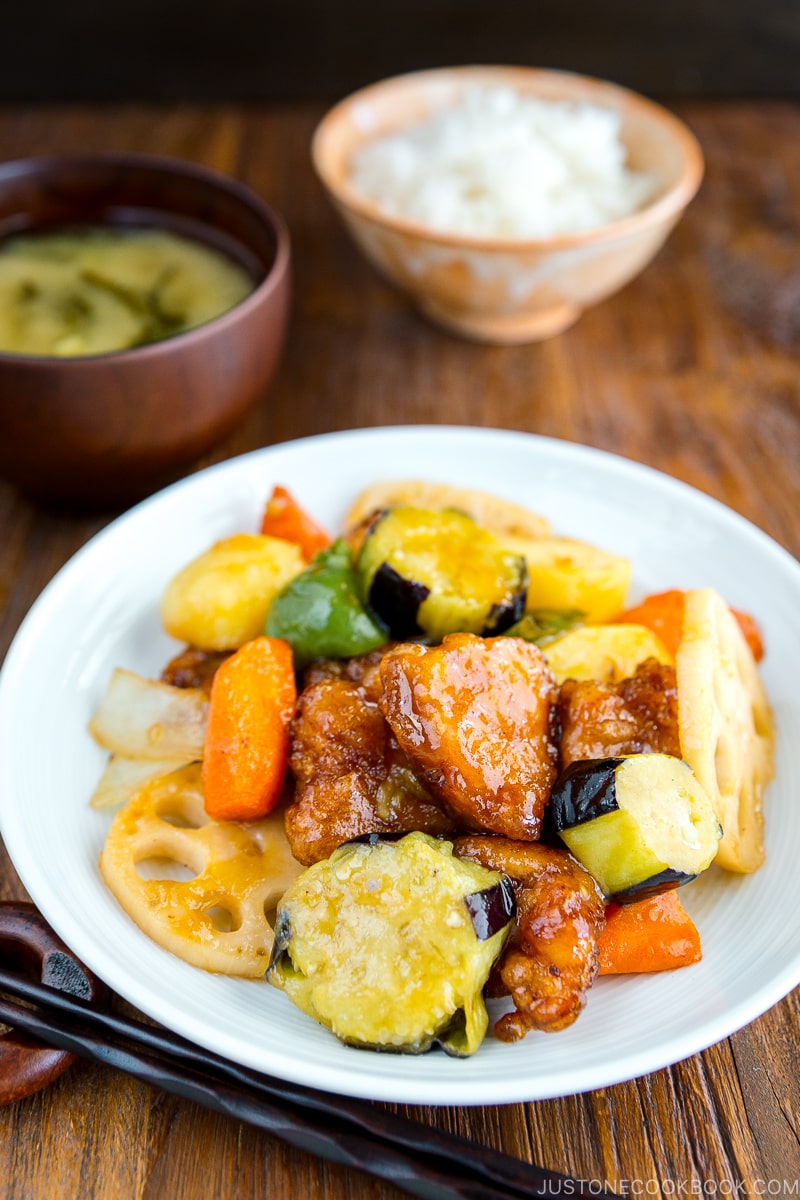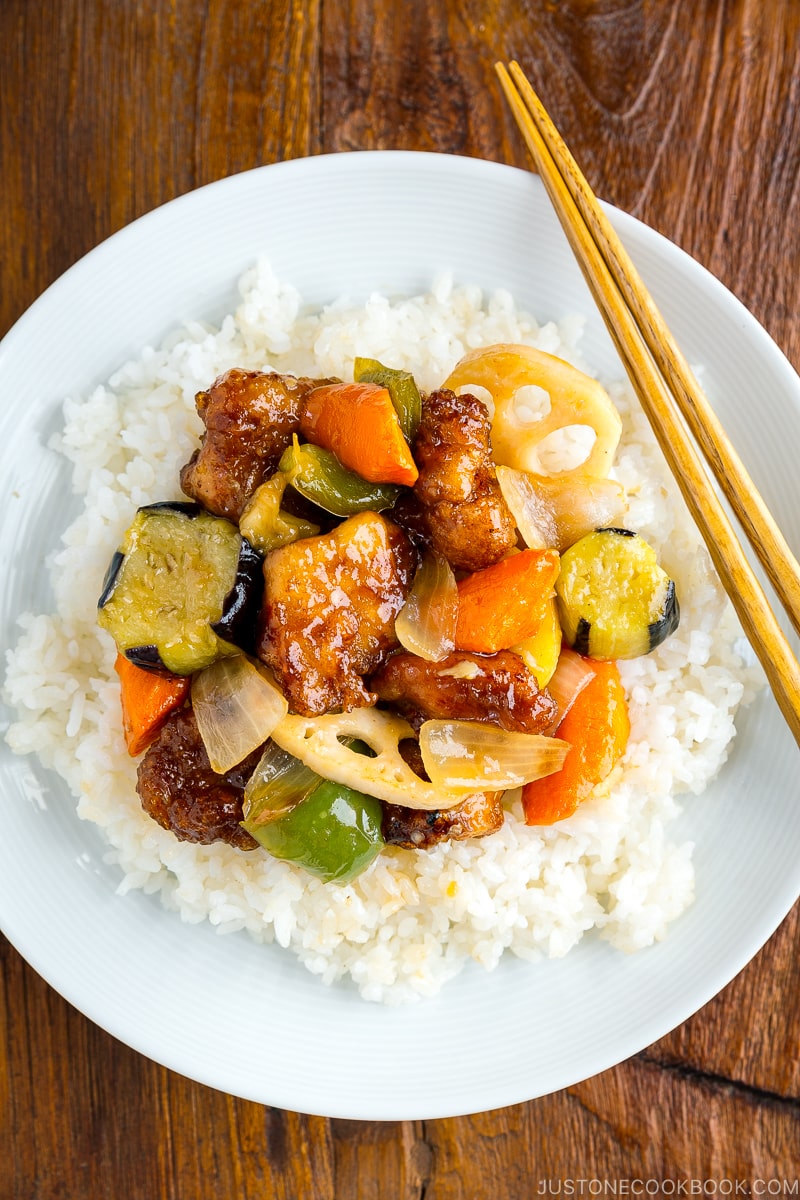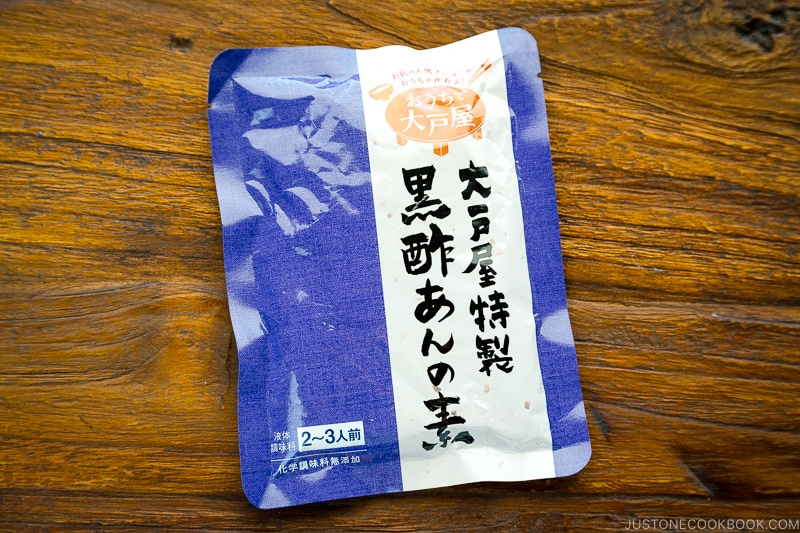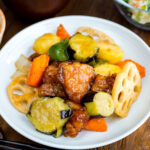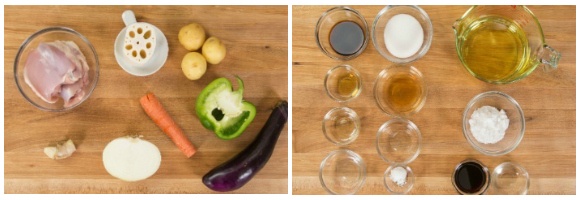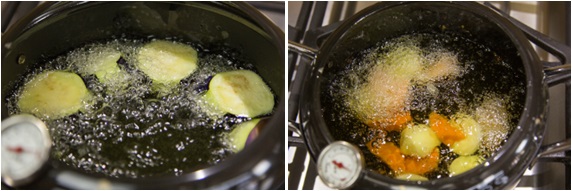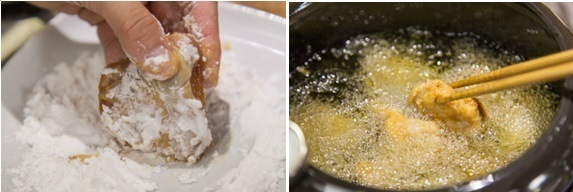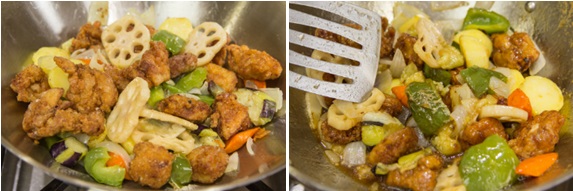Sweet and sour dishes from Chinese restaurants are really popular and my children love them whether they’re made with chicken or pork. Japanese-style sweet and sour chicken is a little different from the typical one you’ve tried, however. What makes it Japanese-style? In this post, I’ll explain the key features and share my copycat recipe for Ootoya’s Sweet and Sour Chicken.
What is Japanese Sweet and Sour Chicken?
This is a copycat recipe from a popular diner in Japan called Ootoya (大戸屋), which specializes in Japanese home-cooking dishes (katei ryori 家庭料理). In Japan, we refer to the sweet and sour sauce as amazu-an (甘酢あん), literary meaning “sweet vinegar gravy.” On Ootoya’s menu, this recipe is called Tori Kurozu-An (鶏と野菜の黒酢あん). This sweet and sour chicken has been my favorite from Ootoya’s menu since I first tried this dish years and years ago. Here are the key features of this Japanese homestyle version of the dish:
Uses Japanese black rice vinegar (黒酢, kurozu) – Black rice vinegar is an aged vinegar made from rice. It is less sour with a deeper flavor than regular rice vinegar and is milder than Chinese black vinegar. Omits ketchup – You won’t see the typical red color in Japanese-style sweet and sour sauce. Includes various vegetables – This version also contains several types of veggies not normally seen in Chinese-style sweet and sour chicken.
Ingredients for Sweet and Sour Chicken
chicken thighs potatoes lotus root (renkon) carrot Japanese or Chinese eggplant onion green pepper potato starch or cornstarch neutral oil – for deep-frying
For the Marinade:
grated ginger, grated garlic, soy sauce, and sake
For the Black Vinegar Sauce:
sugar apple cider vinegar soy sauce Japanese black vinegar (kurozu) – use half the amount you use Chinese black vinegar mirin water sake potato starch or cornstarch
How To Make Sweet and Sour Chicken
Suage, a Japanese Deep-frying Technique
This recipe uses a Japanese cooking technique called suage (素揚げ, “su-ah-geh”). It means deep-frying without a coating of flour or batter. This technique is used mostly for vegetables, but sometimes meat, too. The suage technique helps the ingredient keep its original flavor, color, and shape. By deep-frying vegetables for a short period of time, you can keep the crispness of the vegetables. This compares to stir-frying, which takes longer than deep-frying and sometimes cooks the veggies unevenly or makes them wilt and soften.
Packaged vs. Homemade Sweet and Sour Chicken
When I was in Japan last summer, I shared on Instagram a picture of this dish while dining there. A JOC reader in Australia left a comment saying that Ootoya actually sells a pre-made package of this special kurozu-an sauce. So the next time I passed by the restaurant, I bought two packages to try back at home. After returning to the US, I made this dish at home with the packaged sauce, then tried to recreate this flavor. While testing my own recipe, I found out Ootoya actually shares the recipe for this dish online! So I made 3 batches for the taste test: Our family had a serious tasting session for this recipe and one sauce won everyone’s votes for the best flavor. It was actually mine! My version was not that different from the original sauce, but in my humble opinion, I think mine has a better balance than the packaged one or the Ootoya’s recipe. However, I still think the restaurant serves the best Tori Kurozu-An! For home cooking, though, my family agrees that my recipe was the best. I wrote down the exact measurements I used, so please try to be accurate for the best result. If you have a chance, try this dish at one of Ootoya locations both in Japan and elsewhere like Singapore, China, Taiwan, Thailand, Hong Kong, Indonesia, and New York City in the US. Wish to learn more about Japanese cooking? Sign up for our free newsletter to receive cooking tips & recipe updates! And stay in touch with me on Facebook, Pinterest, YouTube, and Instagram.
